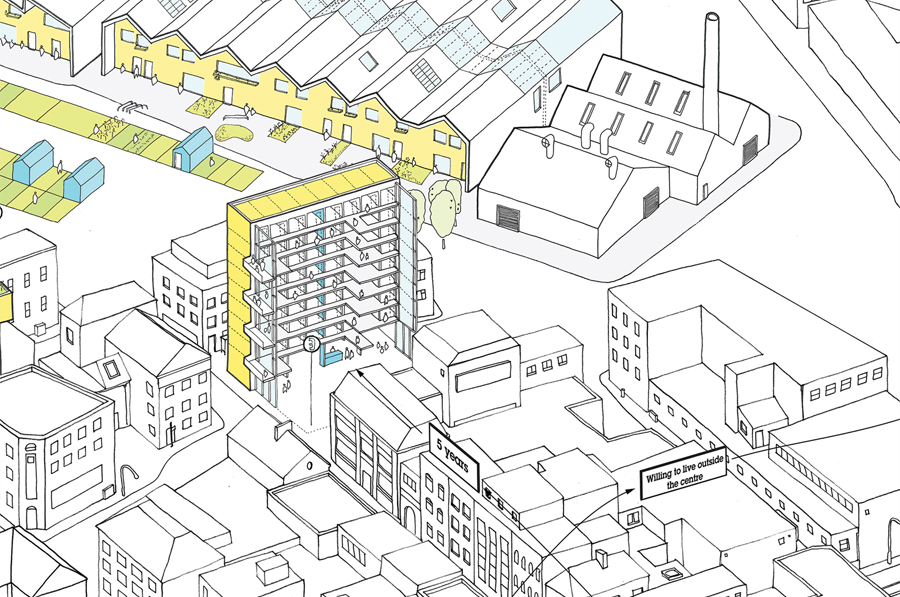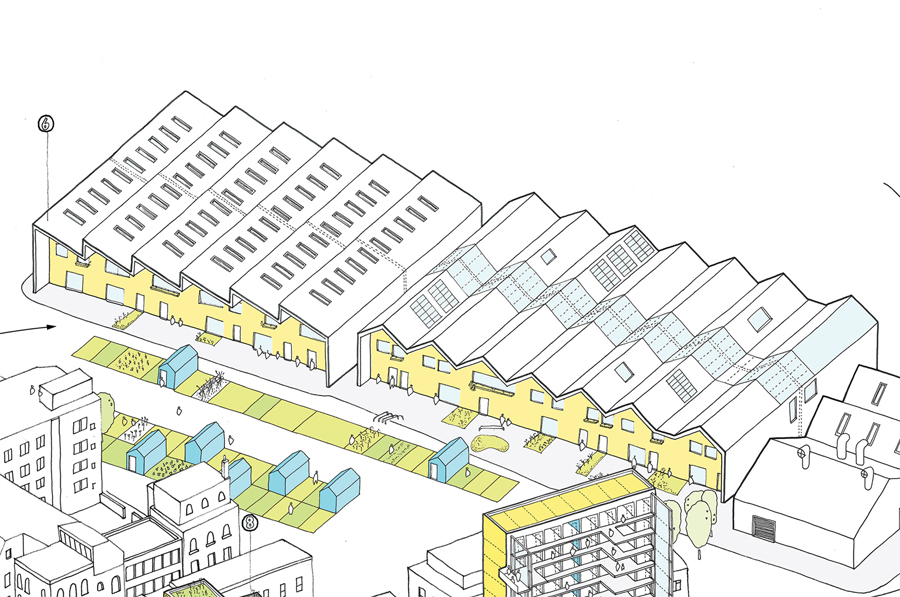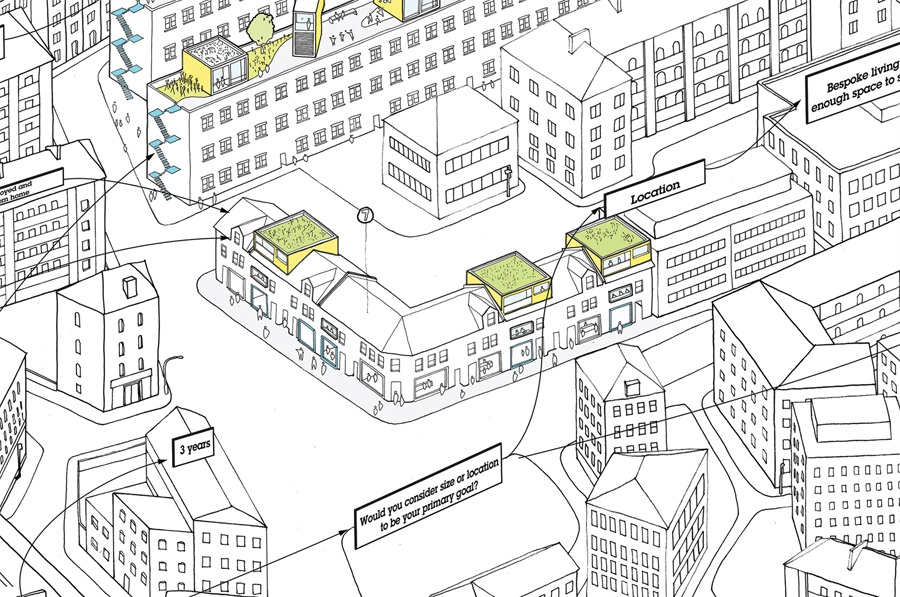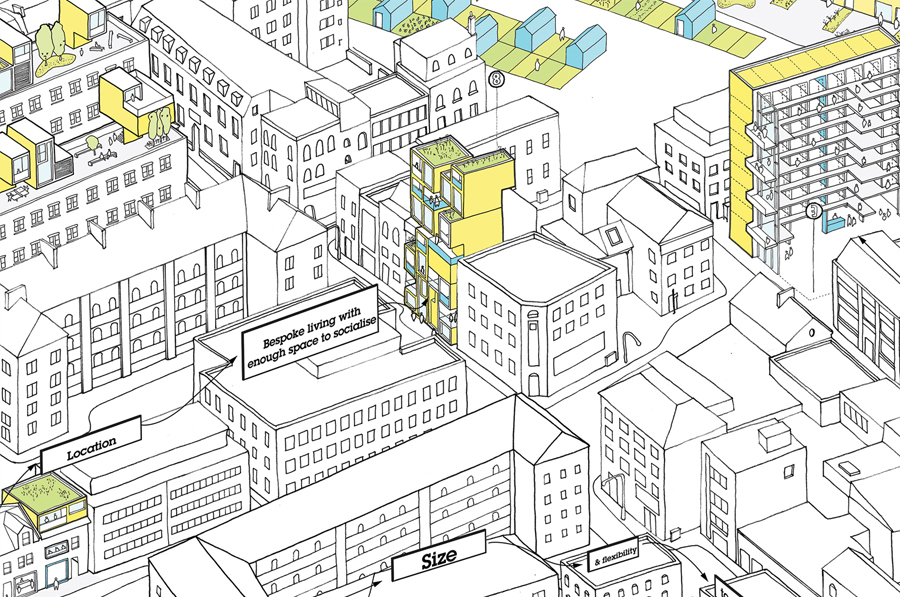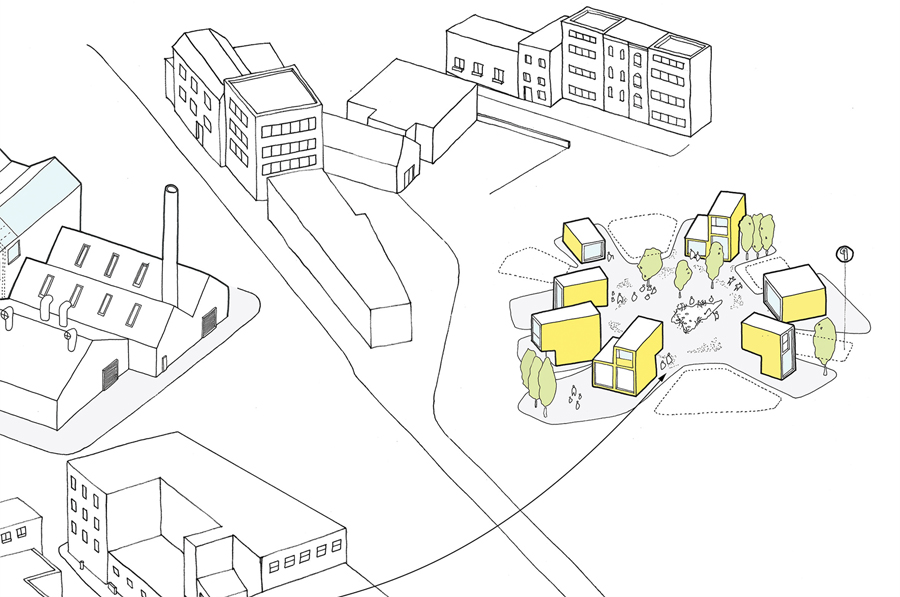Future of Housing
Our response, exhibited in Spring 2015, concentrated on the difficulties young people have getting on the housing ladder. Each of the initiatives demonstrated in a drawn notional fragment of London sought to create a positive community contribution, whilst satisfying the need for increasing independence and stability.
This cityscape drawing brought to life a series of ideas which addressed the need for young people to have a place to call home, not with one broad-brush solution, but with a variety of approaches based on different housing aspirations and the changing landscape of the city. The nine ideas shown respond to varying housing conditions and personal circumstances, and illustrate alternative approaches to home ownership.
Our aim was to produce a drawing that puts the viewer in the shoes of young people, moving through the city and providing a potential solution for debate.
“As architects, what can we offer to this debate? We see ourselves as ‘enablers’ who can realise the potential of places and spaces. Our approach was to tackle the housing crisis by offering architectural solutions that initiate debate.”
Jonathan Dallas
Dallas-Pierce-Quintero
Solution 1: Shed Living
This solution re-imagined vacant office buildings as vibrant hubs for short term basic housing with shared community facilities. The idea was to lease a shed for a low monthly rent allowing the occupant to save money for a deposit. This solution was geared towards those who wanted the most amount of flexibility and affordability.
Solution 2: Carpark Living
This was aimed at those who have a small amount of money and might invest in the re-appropriation of an under-used carpark. The idea is that someone could buy a flat-pack wall system and create a unit for living, whilst sharing community facilities.
Solution 3: Microflat Living
This sought to inspire a developer to create units for single people who don’t want to pay for space they don’t use. This would take the form of a microflat, with generous communal amenities to help foster a sense of community.
Solution 4: Rooftop Living
Rooftop living recognises an abundance of space for pre-fab housing units to increase existing local authority housing stock. The idea here is that the local authority would lease a pod and transform these roofscapes into communal green spaces, benefiting wildlife and energy savings.
Solution 5: Garden Living
Here, we imagined a system which allows applicants interested in building their own home could be matched up with landowners for their compatibility and mutual benefits, such as maintenance and others issues like loneliness, in the exchanged for a piece of land on which a bespoke house could be built.
Solution 6: Industrial Living
A shift in the retail landscape could free up retail warehouse units for re-appropriation. The scale of this development could be led by community land trusts, who appoints an architect but acts as the developer. The new homes would be awarded by ballot and geared towards lower-income families looking for a long term commitment.
Solution7: High Street Living
We imagined a proper live/work buffer zone between the ground floor commercial space and the residential space above that breathes new life into our high streets. This was geared to those who want to live in a central location.
Solution 8: Infill Living
Using design expertise, it is possible to unlock difficult to develop pieces of land and maximise the use of space for residential use. People could pool together their deposits and appoint an architect-led design team and contractor to build a bespoke scheme.
Solution 9: Self-build Living
A self-build housing development on brownfield land, which is driven by a co-operative of residents who prioritise stability and security for the long term. The initial build is a workshop which upon completion of all the units is used as a community building.
Without a doubt, this is one of the most challenging subjects which has a real significant impact on present and future generations. We’ve approached this as architects but it needs the input from across all sectors. We want these ideas to be seen as a conservation starter that sparks debate and we thank the Royal Academy of Arts for giving us the opportunity to be involved in this thought provoking exhibition.




